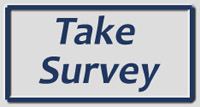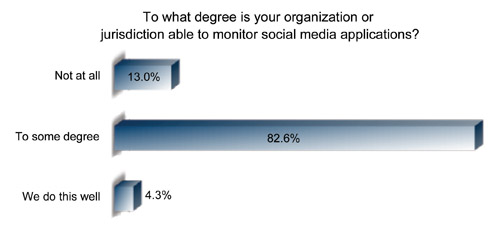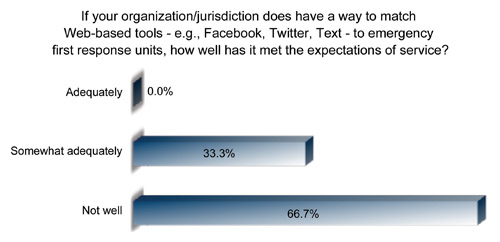 “There has been a lot of discussion in the disaster sector on the use of social media and mobile applications for preparedness and response,” says DomPrep40 member Joseph C. Becker, senior vice president of disaster services at the American Red Cross. In leading the Red Cross responses to recent disasters, Becker has seen the potential of social media to greatly improve the way people in need connect with those who can help. The recent Haiti response is a case in point in which service improved as a result, and has led him to question what implications such use pose for policies and procedures, both for response organizations and for governments.
“There has been a lot of discussion in the disaster sector on the use of social media and mobile applications for preparedness and response,” says DomPrep40 member Joseph C. Becker, senior vice president of disaster services at the American Red Cross. In leading the Red Cross responses to recent disasters, Becker has seen the potential of social media to greatly improve the way people in need connect with those who can help. The recent Haiti response is a case in point in which service improved as a result, and has led him to question what implications such use pose for policies and procedures, both for response organizations and for governments.
Cities, counties, and non-governmental organizations (NGOs) have been using social media as an additional means to interact – both pre-disaster and during the event itself. “I am particularly concerned over how social media create an expectation for expressing need when they become the surrogate ‘9-1-1’ when regular services, including voice communications, are disrupted by a disaster,” says Becker. If text services and the Internet remain intact, the key question then becomes how jurisdictions and rescue services can tie texting and mobile social media applications — which the users apparently assume will link into a back-end response system that delivers. “The problem in Haiti was that in many cases there  was no mechanism for an expression of need by text to connect with organizations that could help,” says Becker.
was no mechanism for an expression of need by text to connect with organizations that could help,” says Becker.
Becker drafted this survey for the DP40 and DomPrep members to determine their respective opinions on the use of social media in disaster-response situations. The issues involved have become increasingly important and may require the setting of new policies – particularly in view of the legal ramifications with regard to liability.
Key Findings: The use of social media in times of disaster is increasing. But the organizations and political jurisdictions involved do not yet possess the capability and scalability needed to connect urgent requests, via the social media, to response units. Moreover, liability issues still need to be addressed.
Following are the complete DP40 survey results: Just over 60 percent of the DomPrep40 members say that their own jurisdictions are using social media tools, to at least some degree, in disaster responses.

More than 80 percent say that their organization or jurisdiction has at least some ability to monitor social media applications.

The table below represents the responses of the DP40 members to a series of questions. The following conclusions, based on their responses, became apparent. Almost 90 percent say the use of social media drives the expectation of those using the social media that they are communicating with responders, and that such communication will facilitate a timely response. If true, that unproven assumption on the part of victims in a major disaster could have seriously negative consequences if an organization or jurisdiction cannot respond as expected.
Just under three-quarters of DP40 members say that they had not been aware that disaster victims are indeed using the social media to convey their urgent requests for assistance. This result would indicate a belief that victims may in fact continue to rely on traditional channels such as 9-1-1. It does not, however, reflect the general thinking on use and expectations if traditional channels are down – Becker’s point. A key policy issue here would be the need to address the demographic implications. Responders could be inclined, for example, to map the “topography” of the disaster in accordance with the traffic generated by social media – to the detriment of urgent needs not conveyed by those who lack access to social media-capable devices.
More than nine out of ten DP40 members say that their organizations or jurisdictions do not currently have a way to connect urgent requests via social media to responders – the key finding. Just over nine in ten also say they are not staffed to monitor social media applications, and respond accordingly, during a major event. And, a crucial finding, 86 percent say that their organizations have not considered the liability issues that might result from: (a) receiving urgent requests via social media; and (b) being unable to respond adequately.

Where DP40 members have had a means to use social media tools to connect with responders, over 60 percent say it has not been done very well.

How does the thinking of the DP40 compare with your own current understanding? In Part 2 of this Use of Social Media in Disaster Response survey, all DomPrep members will now have a chance to weigh in and either agree or disagree. Take the Survey Now!






